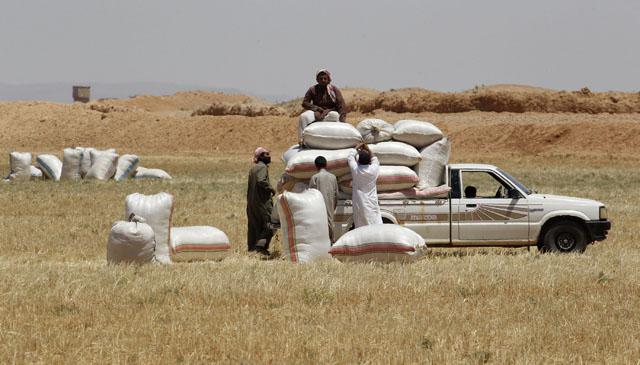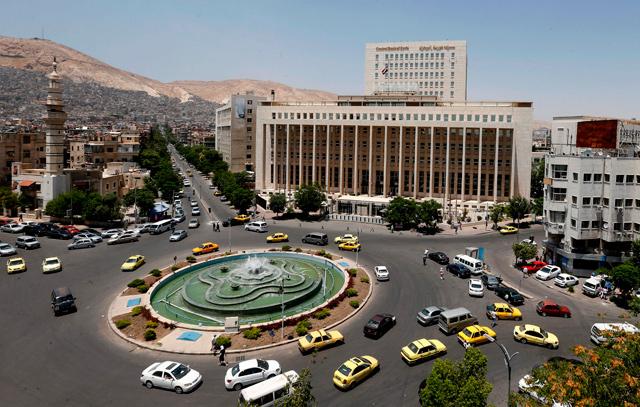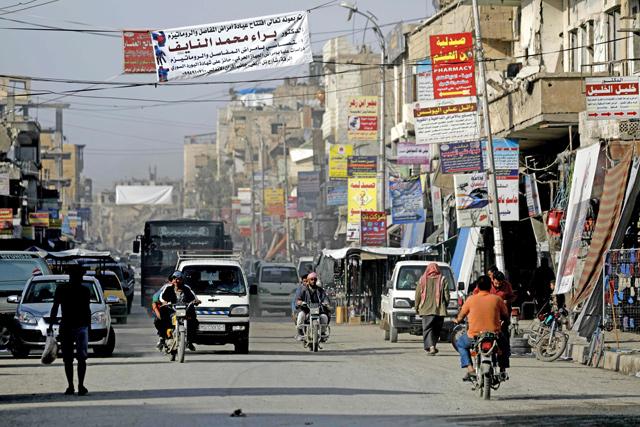You are here
Syria's economy heads into ruin — report
By Reuters - May 28,2014 - Last updated at May 28,2014

AMMAN — Syria's economy, rocked by four years of civil war, is shrinking fast as industrial and agricultural output falls, leaving almost two thirds of the population in extreme poverty, according to a UN sponsored report released on Wednesday.
The study, conducted by the Damascus based-Syrian Centre for Policy Research and commissioned by the United Nations, estimates a 40 per cent contraction in the gross domestic product (GDP) since the start of the conflict in 2011.
Almost half of Syria's five million labour force is unemployed.
"The tempo of contraction in the economy has accelerated now," Syrian centre researcher Zaki Mehchy told Reuters.
Losses were estimated at $143.8 billion, a figure the report said was based on estimated damage to residential and state buildings. Experts said it was too early to ascertain more accurately as the heaviest hit areas are still combat zones.
A big blow to Assad's financial resources was the loss of most of Syria's oil production of around 400,000 barrels per day (bpd), with eastern regions now mainly under rebel control. The government now gets a mere 16,500 bpd of crude oil, although the fall in gas production has been less severe.
According to the report, a major outcome of Syria's economic devastation was politically influential cartels who strip state assets through plundering and pillaging of resources and now have a stake in prolonging the conflict, the report said.
"There are powerful forces that are exploiting resources of the country from theft to land and oil smuggling and appropriating them. They now have an incentive in the conflict going on," Mehchy said.
The report said Syria, once a lower middle income country with a $67 billion GDP before the crisis that was witnessing expanding investments and fast growth, was now being transformed into a country "of poor people" .
Three in every four Syrians lived in poverty at the end of 2013 and more than half of its nearly 20 million people, many displaced or refugees abroad, pauperised and surviving in extreme poverty.
"The incidence of poverty in Syria has now reached catastrophic levels," the report indicated.
The independent Damascus-based NGO, which collates information from official and nongovernmental sources, said the worst off Syrians lived in conflict areas and areas that were under siege in rural Damascus where many face hunger, malnutrition and starvation.
The United Nations says more than 150,000 people have been killed in a war that has reduced entire districts of Syria's main cities to ruins.
The conflict had dramatically changed the economy's pre-uprising diversified economy. Government services and agriculture accounts for more than 50 per cent of a much smaller economy.
It has also dealt a severe blow to tourism revenues that earned Syria billions of dollars and has damaged its preeminent role as a transhipment hub from Europe to the Gulf.
Public debt reached 126 per cent of GDP in 2013 as the country continued to import mainly oil and basic commodities to alleviate shortages, the report indicated.
Syria was increasingly indebted to Iran, Damascus' main regional ally that has extended a $3 billion credit line that economists say has helped keep the economy afloat.
The Syrian authorities faced an "economic double bind" of ensuring costly subsidies of basic commodities continue to stave off discontent while at the same time reallocating a bigger share of public resources to a costly military campaign to regain control over rebel-held areas, the report said.
Economists, however, say the loss of large parts of northern and eastern Syria from government control, where the authorities no longer provide the same level of services or supplies of subsidised food, has also relieved pressures on state spending.
The more than three-year-old conflict has led to business closures and capital flight to neighbouring countries that have seen some major Syrian businesses relocating abroad to recoup losses and continue production.
Related Articles
DAMASCUS — Syria's central bank devalued the Syrian pound on Wednesday giving in to weeks of depreciation on the black market as new US sanc
BEIRUT — By reopening a key land crossing with Jordan this month, the Syrian regime is inching towards a return to trade with the wider regi
DAMASCUS — An act of sabotage carried out with the help of a foreign state damaged underwater pipelines connected to Syria's Banyas oil refi

















